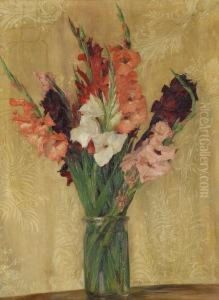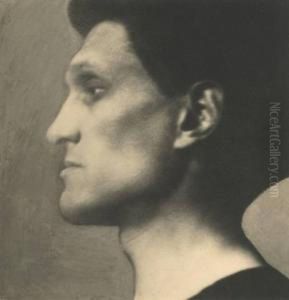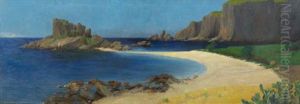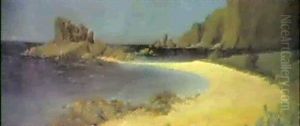Curt Stoeving Paintings
Curt Stoeving was a German painter and illustrator born on February 12, 1863, in Neurode, which was then part of the Kingdom of Prussia; it is now known as Nowa Ruda in Poland. He is best known for his historical paintings, portraits, and illustrations that often depicted scenes from Germanic and Norse mythology, as well as figures from history. Stoeving's work was part of the symbolism and historicism movements that were popular in Germany at the end of the 19th century.
In the early stages of his career, Stoeving studied at the Royal Academy of Arts in Berlin. His education in the arts laid a strong foundation for his future work, and he quickly gained attention for his technical skill and his ability to weave narrative and emotion into his paintings. Despite the limited international recognition he received during his lifetime, his works were appreciated in Germany and were part of the cultural fabric of the time.
Stoeving’s art often reflected a romantic yearning for the past, a common theme in the late 19th and early 20th centuries as industrialization transformed European societies. His illustrations, often for books and periodicals, helped to popularize the myths and legends of the German people, contributing to a wider understanding and appreciation of cultural heritage. Curt Stoeving's artistic contributions extend to his role as a teacher, where he influenced a new generation of artists with his focus on craftsmanship and historical subject matter.
Curt Stoeving continued to produce work until his later years, and he died on May 10, 1939, in Berlin. Although he may not be as widely recognized today as some of his contemporaries, his art remains a testament to the rich cultural and historical tapestry of Germany during his time. His paintings can still be found in various art collections and are studied for their representation of the symbolism and historicism that characterized late 19th-century German art.



